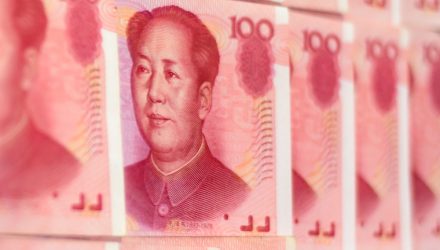China’s real estate developer woes stemming from last year’s Evergrande Crisis appear to be spilling over into its economic growth. A confluence of other factors is providing gains for bearish traders in China equities.
In addition to the Evergrande debacle, a resurgence of COVID-19 cases forced more lockdowns, further pumping the brakes on the country’s economic growth. A less-than-stellar second quarter showing highlighted that weakness.
“A few weeks ago, China reported GDP growth of 0.4% in the second quarter, falling short of the 1% projected by analysts polled by Reuters,” a Business Insider article noted. “It was the worst report since the country reported a 6.8% contraction in the first quarter of 2020 as it began battling the pandemic.”
As mentioned, COVID restrictions put a stern clamp on economic growth. Just as the country was gaining steam on a recovery, China essentially had to go back to square one.
“China’s muted second quarter growth was driven in part by the zero-Covid policies, which included strict lockdowns and quarantines intended to stamp out the virus,” the Business Insider report added. “They brought much of the economy to a standstill. In June, the unemployment rate in China of people in cities aged 16 to 24 rose to 19.3%, the highest level since the figure was first released in 2018.”
In addition to falling short of projections, the GDP report may have even understated the slowing of the Chinese economy. There is widespread skepticism among economists about the accuracy of Chinese economic data, and many have speculated that the Chinese economy actually experienced a contraction in the second quarter.
China’s Economy Weaker Than Reported?
For those bearish on China, the Daily FTSE China Bear 3X Shares (YANG) is certainly worth looking at. The fund is up over 40% for the past month.
YANG seeks daily investment results equal to 300% of the inverse (or opposite) of the daily performance of the FTSE China 50 Index. The index consists of the 50 largest and most liquid public Chinese companies currently trading on the Hong Kong Stock Exchange (“SEHK”).
There could be further weakness ahead, especially if there are flaws in the economic data reported. Inaccuracies could mean that the second quarter was actually worse than what was shown to the public.
“In addition to falling short of projections, the GDP report may have even understated the slowing of the Chinese economy,” the report added. “There is widespread skepticism among economists about the accuracy of Chinese economic data, and many have speculated the Chinese economy actually experienced a contraction in the second quarter.”
For more news, information, and strategy, visit the Leveraged & Inverse Channel.









